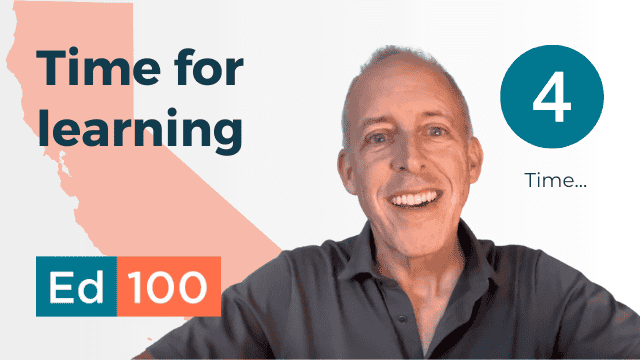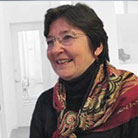
Sometimes students need more time.
In This Lesson

Does tutoring work?
What is the history of tutoring?
What is tracking?
Is tracking of students bad?
How can teachers differentiate instruction?
What is MTSS?
How do gifted programs work?
What is blended learning?
How can schools personalize the way students learn?
▶ Watch the video summary
★ Discussion Guide
The education system is generally designed with the optimistic model that all kids keep up with the class. But what happens when they don't?
To support a student who needs more help, nothing beats one-on-one time with a well-prepared tutor. A qualified personal tutor can help a student focus on learning exactly what they need to know to catch up, or move ahead.
Tutoring is costly
The operational premise of school is that students can learn together efficiently. One-on-one tutoring is a powerful way to help a student on a temporary or emergency basis, but it is prohibitively expensive, and schools don't have unlimited staff. Most of the time, teachers have little choice but to power through the curriculum, explaining subjects as best they can in a way that will work for most kids. Mostly they "aim for the middle," pulling aside kids who need extra help. But there is only a certain amount of time in the day.
America briefly flirted with wide-scale publicly-funded tutoring - it didn't work out. Here's what happened:
For more than a decade, a provision of America's main national education law (the federal No Child Left Behind Act, NCLB - 2002-2015) guaranteed children in some low-performing schools access to tutoring services. These Supplemental Educational Services (SES) were offered at a parent's request. Over time, an increasing number of schools and districts qualified for SES, leading to a boom in business for tutoring services. Some districts created their own tutoring programs; others hired outside firms. At its peak, the program diverted billions from schools to tutoring companies, with results that harmed more than they helped. When No Child Left Behind was replaced by the Every Student Succeeds Act (ESSA), the mandate to provide tutoring time was abandoned.
Did this experience disprove the value of tutoring? No, but it certainly demonstrated its costliness.
Improving the use of time in school
A central problem of education is that students need different things at the same time. Teachers have to slice their attention to make the best use they can of the time they have with students, mostly in groups. Educators take many approaches to cope with challenge of educating students at different levels at the same time. Perhaps because the challenges are so complex, educators can become very philosophical about them.
When educators become philosophical they tend to invent new jargon. Buckle up.
Tracking decisions can be biased
Tracking: The term tracking (or, more neutrally, grouping) describes the approach of separating students into groups based on what they are ready to learn. This approach assumes - or acknowledges - that not all kids advance through school with comparable skills, knowledge, and speed. Tracking is efficient — it enables groups of strong, motivated students to learn and progress quickly, unencumbered by slower learners. It also allows students who need more time to have it. Large classes can function if students are ready for the material.
A disadvantage of placing kids on tracks is that placement decisions tend to be permanent. Students can easily down-shift to a slower track, but the decision is one-way. Once placed on a slower track, it is fiendishly hard to catch up, especially in math, sciences, and world languages. Another important disadvantage is that placement decisions involve judgment, and judgment can be clouded by bias.
Differentiated instruction: Because tracking decisions are hard to reverse, most teachers try to avoid grouping students based on ability if they can. It's not easy. Teachers have to be creative to meet the authentic needs of students at varying levels of learning readiness. It can be a difficult feat even for experienced teachers, in part because it is not always easy to tell which students are "getting it" and which aren't.
To intervene effectively before students fall seriously behind, schools need ways to detect problems and act on them in timely ways. To do this systematically, it helps for teachers to use consistent approaches to teaching and testing.
Jargon related to grouping and supporting students
Schools and districts have taken many creative approaches to giving students extra help. As you might expect, each program gets a new name, which makes for a glorious alphabet soup of acronyms. As of 2025, the currently ascendent term appears to be Multi-Tiered System of Support (MTSS), but the related term Response to Instruction and Intervention (RtI²) still has adherents. Grouping students is also a common tactic for Positive Behavioral Interventions and Supports (PBIS).
Decades ago, California schools used to set aside time specifically for students who were identified as Gifted and Talented (GATE). These programs have been almost entirely eliminated. If there is a gifted program in your school, it is because your school district committed local funds for it. (See the Ed100 blog for much more about this.)
Using technology to make learning time more effective
Technology has become increasingly important to the effective use of time for learning. Web-based systems can help teachers give students the instruction and practice that they need to understand and master some academic skills. When technology is deeply incorporated into the operation of the school day, it's sometimes called blended learning. Rocketship Schools, a charter school network, received a lot of attention as an early pioneer of this approach.
Preston Smith, the co-founder and CEO of Rocketship, explains it this way:
“We should all focus on personalized learning… technology is an incredible tool in this work as there are online programs that immediately allow a student to access content in their optimal zone. Again — technology is not the complete answer, but it is definitely part of the solution.”
It is too early to predict how Artificial Intelligence will influence tutoring and the use of time in schools, but it's clear that it certainly will, for good or ill or both.
The next lesson examines the unequal role of summertime in education.
This lesson was updated September 2025
CHAPTER 4:
Spending Time...
-
Spending Time...
Overview of Chapter 4 -
Preschool and Kindergarten
Yes, Early Childhood Education Matters -
Class Size
How Big Should Classes Be? -
School Hours
Is There Enough Time To Learn? -
Time Management in School
Spending Time Well -
Tutoring
When Kids Need More Time and Attention -
Summer School
Time to Learn, or Time to Forget? -
After School Learning
Extending the School Day -
Attendance
Don't Miss School!
Related
Sharing is caring!
Password Reset
Search all lesson and blog content here.
Login with Email
We will send your Login Link to your email
address. Click on the link and you will be
logged into Ed100. No more passwords to
remember!















Questions & Comments
To comment or reply, please sign in .
Jeff Camp - Founder October 23, 2025 at 12:45 pm
Jeff Camp - Founder September 8, 2025 at 4:58 pm
LeeAnn Corral March 6, 2024 at 5:01 pm
Jeff Camp - Founder October 10, 2022 at 10:46 pm
Carol Kocivar August 3, 2022 at 8:23 pm
• Instructional Learning Time
• Closing Learning Gaps
• Pupil Supports such as the health, counseling, or mental health services, including community schools .
• Instruction for credit-deficient pupils
• Academic Services—Providing additional academic services such as diagnostic, progress monitoring, and benchmark assessments of pupil learning.
https://www.ebudget.ca.gov/2022-23/pdf/Enacted/BudgetSummary/K-12Education.pdf
Jeff Camp - Founder May 3, 2021 at 10:38 am
Susannah Baxendale January 17, 2019 at 12:45 pm
Angelica Manriquez February 29, 2016 at 3:56 pm
Brandi Galasso April 24, 2015 at 9:13 pm
Veli Waller April 5, 2015 at 6:54 pm
Tay Fe April 23, 2015 at 2:52 pm
Mamabear March 19, 2015 at 11:49 pm
Steven N June 23, 2014 at 6:13 pm
The 2013 CSBA Convention in SanDiego had a number of workshops - I expect the coming CSBA Convention in SF will also cover this. Ask for their outreach coordinators to address your Boards! INFO: https://www.csba.org/GovernanceAndPolicyResources/StudentAchievement/SummerLearning.aspx under "Summer Learning Programs"
Laurie Inman April 12, 2011 at 11:04 am
So why are students not receiving this free help? There is a range of answers, but more importantly what solutions exist? Actively promoting the opportunities throughout the community is vital to parents and students knowing and understanding their choices. Schools can enter into partnerships with non-profits that provide the human resources that are often times unavailable. Schools must also be creative in thinking about the when and how to offer tutoring whether it be on-site and/or in conjunction with a community organization. In addition, corporate professionals are willing to mentor students, if they are provided enough information to coordinate their time. It is imperative to be innovative when considering how to increase the number of students receiving free tutoring services and strengthen the system that supports them.